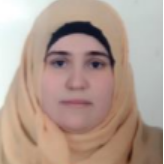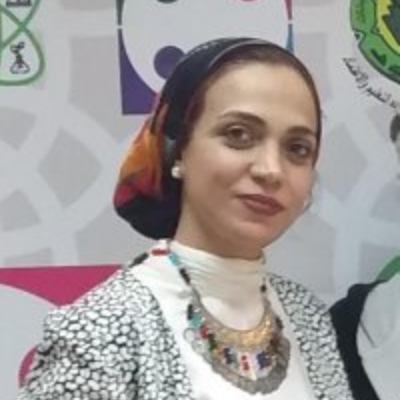International Journal of Computer Network and Information Security (IJCNIS)
IJCNIS Vol. 14, No. 2, 8 Apr. 2022
Cover page and Table of Contents: PDF (size: 1240KB)
Robust 4-D Hyperchaotic DNA Framework for Medical Image Encryption
Full Text (PDF, 1240KB), PP.67-76
Views: 0 Downloads: 0
Author(s)
Index Terms
Image Encryption, Medical Image, DNA Computing, Hyperchaotic System
Abstract
With the integration of cloud computing approaches in the healthcare systems, medical images are now processed and stored remotely on third-party servers. For such digital medical image data, privacy, protection, and security must be maintained by using image encryption methods. The aim of this paper is to design and apply a robust medical encryption framework to enhance the protection of medical image transformation and the patient information confidentiality. The proposed Framework encrypt the digital medical images using DNA computation and hyperchaotic RKF-45 random sequence approach. For which, the DNA computation is enhanced by applying hyperchaoticRKF-45 random key to the different Framework phases. The simulation results on different medical images were measured with various security analyses to prove the proposed framework randomness and coherent. Simulation results showed the ability of the hyperchaotic DNA encryption framework to withstand multiple electronic attacks with high performance compared to its counterparts of encryption algorithms. Finally, simulation and comparative studies have shown that, the proposed cryptography framework reported UACI and NPCR values 33.327 and 99.603 respectively, which are near to the theoretical optimal value.
Cite This Paper
Shaymaa Fahmee Alqazzaz, Gaber A. Elsharawy, Heba F. Eid, "Robust 4-D Hyperchaotic DNA Framework for Medical Image Encryption", International Journal of Computer Network and Information Security(IJCNIS), Vol.14, No.2, pp.67-76, 2022. DOI: 10.5815/ijcnis.2022.02.06
Reference
[1] Thinzar Saw, Phyu Hnin Myint, "Feature Selection to Classify Healthcare Data using Wrapper Method with PSO Search", International Journal of Information Technology and Computer Science, Vol.11, No.9, pp.31-37, 2019.
[2] Senny Hapiffah, Ardiles Sinaga, " Analysis of Blokchain Technology Recommendations to be Applied to Medical Record Data Storage Applications in Indonesia", International Journal of Information Engineering and Electronic Business, Vol.12, No.6, pp. 13-27, 2020.
[3] S. C. S. Rabi Prasad Padhy, Manas Ranjan Patra, Cloud computing: Security issues and research challenges, International Journal of Computer Science and Information Technology Security . 2 (1) (2011) 136–148.
[4] X. Deng, Z. Chen, F. Zeng, Y. Zhang, Y. Mao, Authentication and recovery of medical diagnostic image using dual reversible digital watermarking, J Nanosci Nanotechnol 13 (3) (2013) 2099–2107.
[5] S. Das, M. K. Kundu, Effective management of medical information through a novel blind watermarking technique, J Med Syst 36 (5) (2012) 3339–3351.
[6] Z. Subedar, A. Araballi, Hybrid cryptography: Performance analysis of various cryptographic combinations for secure communication, International Journal of Mathematical Sciences and Computing 6 (4) (2020) 35–41.
[7] Sunil Kumar, Sandeep Kumar, Gaurav Mittal, Dharminder Dharminder, Shiv Narain," Non-singular Transformation Based Encryption Scheme ", International Journal of Mathematical Sciences and Computing, Vol.7, No.3, pp. 32-40, 2021.
[8] B. Delman, Genetic algorithms in cryptography, m. s. thesis (2004).
[9] Zuhi Subedar, Ashwini Araballi. "Hybrid Cryptography: Performance Analysis of Various Cryptographic Combinations for Secure Communication", International Journal of Mathematical Sciences and Computing, Vol.6, No.4, pp.35-41, 2020.
[10] S. Jamuna, P. Dinesha, K. Shashikala, K. Kishore Kumar, Design and implementation of reliable encryption algorithms through soft error mitigation, International Journal of Computer Network and Information Security 12 (4) (2020) 41–50.
[11] S. G. Lian, A bloc cipher based on chaotic neural networks, Neuro computing 72 (4) (2009) 1296–1301.
[12] C. Fu, W.-H. Meng, Y.-F. Z. al., An efficient and secure medical image protection scheme based on chaotic maps, Computers in Biology and Medicine 43 (8) (2013) 1000–1010.
[13] C.-F. Lin, C.-H. Chung, J.-H. Lin, A chaos-based visual encryption mechanism for clinical eeg signals, Medical and Biological Engineering and Computing 47 (7) (2009) 757–762.
[14] N. Zhou, A. Zhang, F. Zheng, L. Gong, Novel image compression encryption hybrid algorithm based on key controlled measurement matrix in compressive sensing, Optics Laser Technology 62 (2014) 152–160.
[15] C. Fu, G.-Y. Zhang, O. Bian, W.-M. Lei, M. Hong-feng, A novel medical image protection scheme using a 3-dimensional chaotic system, PLoS ONE 9 (2015) 12.
[16] L. B. Zhang, Z. L. Zhu, B. Q. Yang, W. Y. Liu, H. F. Zhu, M. Y. Zou, Cryptanalysis and improvement of an efficient and secure medical image protection scheme, Mathematical Problems in Engineering 11 (2015).
[17] E. Solak, C. Cokal, Algebraic break of image ciphers based on discretized chaotic map lattices, Inf. Sci 181 (1) (2011) 227–233.
[18] D. Arroyo, G. Alvarez, J. M. Amig´o, S. Li, Cryptanalysis of a family of self-synchronizing chaotic stream ciphers, Commun. Nonlinear Sci Numer. Simul 16 (2) (2011) 805–813.
[19] X. Wang, L. Liu, Cryptanalysis of a parallel sub-image encryption method with high-dimensional chaos, Nonlinear Dyn. 73 (1) (2013) 795– 800.
[20] B. Wang, Q. Zhang, X. Wei, Tabu variable neighborhood search for designing dna barcodes, IEEE Trans. NanoBiosci 19 (2020) 127–131.
[21] X. Li, B. Wang, H. Lv, Q. Yin, Q. Zhang, X. Wei, Constraining dna sequences with a triplet-bases unpaired, IEEE Trans. NanoBiosci 19(2020) 299–307.
[22] G. Xiao, L. Mingxin, L. Qin, X. Lai, New field of cryptography: Dna cryptography, Chin. Sci Bull 51 (12) (2006) 1413–1420.
[23] Y. Zhang, L. H. B. Fu, Research on dna cryptography, Applied cryptography and network security, InTech Press, Rijeka, Croatia (2012) 357–376.
[24] M. Shyam, N. Kiran, V. A. Maheswaran, novel encryption scheme based on dna computing, HIPC 2007 (2007).
[25] T. Hu, C.-J. Ouyang, Y. Liu, L.-H. Gong, An image encryption scheme combining chaos with cycle operation for dna sequences, Nonlinear Dyn 87 (2016) 51–66.
[26] G. Chen, Y. Mao, C. K. Chui, A symmetric image encryption scheme based on 3d chaotic cat maps, Chaos, Solitons Fractals 21 (3) (2004) 749–761.
[27] Li, C. “Cracking a hierarchical chaotic image encryption algorithm based on permutation”, Signal Processing, 118, 203-210 2016.
[28] Zhao, J., Guo, W. and Ye, R.: A chaos-based image encryption scheme using permutation substitution architecture. Int. J. Comput Trends Technol, 15(4), 174-185 2014
[29] H. Liu, B. Zhao, L. Huang, Aremote-sensing image encryption scheme using dna bases probability and two-dimensional logistic map, IEEE Access 7 (2019) 65450–65459.
[30] Adleman LM. “Molecular computation of solutions to combinatorial problems”. Science, JSTOR ,1994;266:1021–4
[31] J. D. Watson, F. H. Crick, Molecular structure of nucleic acids: a structure for deoxyribose nucleic acid, Nature 171 (4356) (1953) 737–738.
[32] K. Li, S. Zou, J. Xv, Fast parallel molecular algorithms for DNA based computation: Solving the elliptic curve discrete logarithm problem over gf(2 n), Journal of Biomedicine and Biotechnology, Hindawi. 2008 (2008) 1–10.
[33] S. Roweis, E. Winfreel, R. Burgoyne, A sticker based model for DNA computation, Journal of Computational Biology 5 (4) (1998) 615–629.
[34] E. B. Baum, DNA sequences useful for computation, in: Proceedings of DNA-based Computers II, Princeton. In AMS DIMACS Series, Vol. 44, 1999, pp. 235–241.
[35] O. D. King, P. Gaborit, Binary templates for comma-free dna codes, Discrete Applied Mathematics 155 (6-7) (2007) 831–839.
[36] L. Zheng, X. Zhang, Chapter 8 - numerical methods, in: Modeling and Analysis of Modern Fluid Problems, Mathematics in Science and Engineering, Academic Press, 2017, pp. 361–455.
[37] C. F. Mayo, Implementation of the runge-kutta-fehlberg method for solution of ordinary differential equations on a parallel processor, M.S. in Applied Mathematics (1987).
[38] L. Chunlai, Y. Simin, A new hyperchaotic system and its adaptive tracking control, Acta Phys. Sin. 61 (4) (2012) 22–28.


